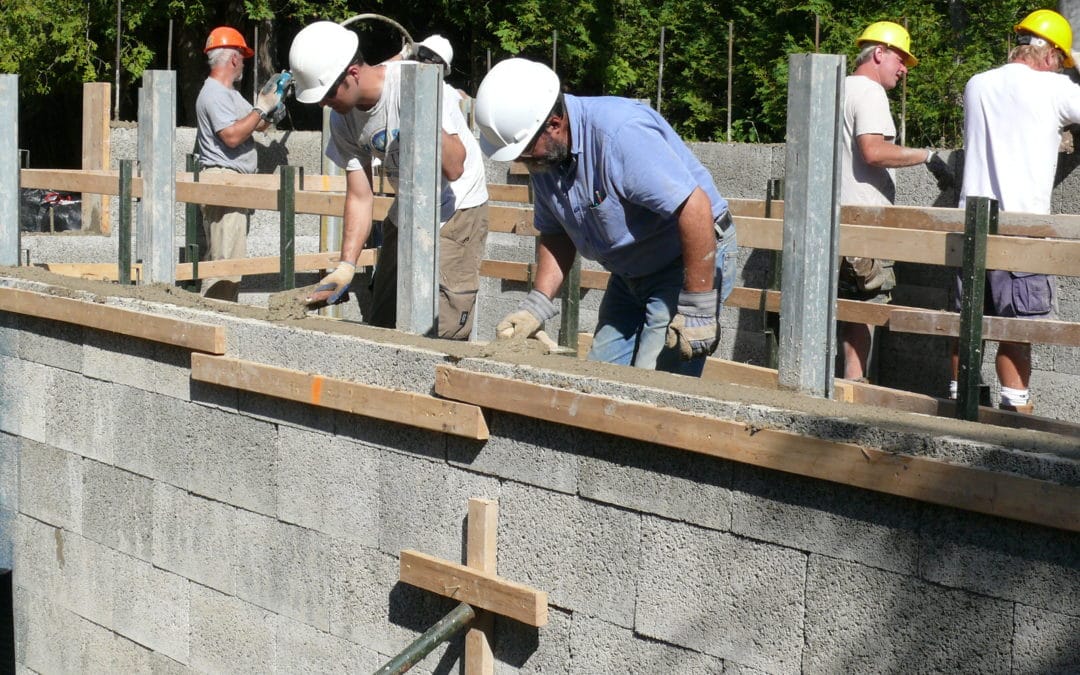ICF and ICCF are abbreviations you’ll see when investigating your options for a concrete home. ICF being more common, stands for insulating concrete forms and are made from foam and plastic. ICCF stands for insulating composite concrete forms and are similar as the name suggests, however there are some important and meaningful differences for those who care about healthy and sustainable building.
ICCFs are the more environmentally friendly wall form block. Composite ICFs (ICCF) use recycled or reclaimed materials to build the outer structure of the wall form block. This reduces waste streams. There are a few manufacturers of ICCFs with Nexcem being the most experienced and having the widest range of product and capabilities. We use mineralized recycled wood that comes from only clean softwood waste. We do not use pallets, post consumer waste or other sources with unidentifiable provenance. This minerlized wood is then combined with a small percentage of Portlance cement. Other composite block manufacturers use reclaimed plastics such as styrofoam that are usually destined for the landfill.
Traditional ICFs are built with a lightweight outer “sandwich” of expanded polystyrene foam, or EPS. EPS foams are sometimes confused with the extruded polystyrene (XPS) brand name styrofoam used in construction and household use. Both forms of polystyrene are well-known for their lack of recycling streams and their environmental persistence (more than 500 years in landfill; more here). EPS foams are marginally better than XPS foams, but are still made with oil products. ICCF products, being the the original insulated concrete form, are rapidly growing in popularity.
Advantages of Nexcem ICCF
Nexcem is made with 100% recycled and organic materials, reducing carbon and environmental footprint. Non-toxic at the core, unlike foam ICFs and other ICCF Blocks, Nexceml enables you to build a safer, sustainable home. In fact, our material has a negative carbon footprint.
You’ll enjoy lower energy costs over the lifetime of your home due to ICCF’s superior thermal performance. One of Nexcem’s many advantages is in the fact that stacking and connecting Nexcem is straightforward. With Nexcem, all wall forms are interchangeable dimensionally. This gives the installer options. Nexcem blocks stack easily, with no mortar, at a weight that is 1/3 of a concrete masonry block of equal size.
Nexcem facilitate a healthier living environment. Unlike ICFs, which require a vapor barrier, Nexcem ICCFs are vapor permeable and do not support the growth of mold. Some refer to this a breathing wall, which can be a misguided term. This does not refer to air flow, but only to vapour flow or vapour permeability. The non-toxic features continue through to wall finishings. ICCFs have a rough-textured, cementitious surface that allows the builder to apply interior plasters or drywall right to the surface of the block itself.
Homeowners and builders choose Nexcem because they want an energy efficient, durable, eco-friendly and healthy concrete home. For one of many reasons, they do not want any plastics, foams or chemcials. Our material will not burn or melt. It is impact resistant and won’t dent. Furthermore you can attach screws to any point on the Nexcem surface (not just at plastic webs). Although our blocks are heavier than foam based ICFs, that also means that walls won’t bow or bend or float during construction. It is easier to build a straight solid concrete wall with ICCF.
When it comes to ICCFs vs. ICFs and why it matters, the answers are clear. Both material choices have similar advantages when it comes to strength, insulating value, and energy efficiency, but only ICCF Blocks can be considered to be more durable, sustainable and healthy. And only one, Nexcem ICCF, is non-toxic and made with 100% natural materials, and is also less labor intensive and more do-it-yourself friendly. Find out more today by getting in touch with us at Nexcem.

